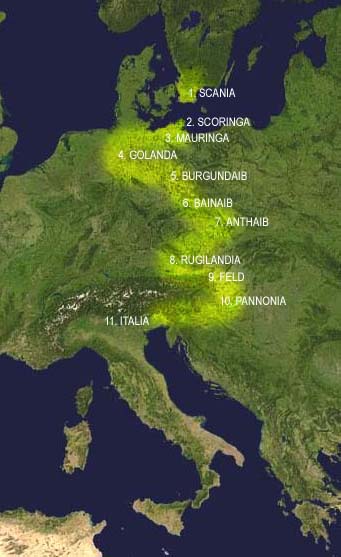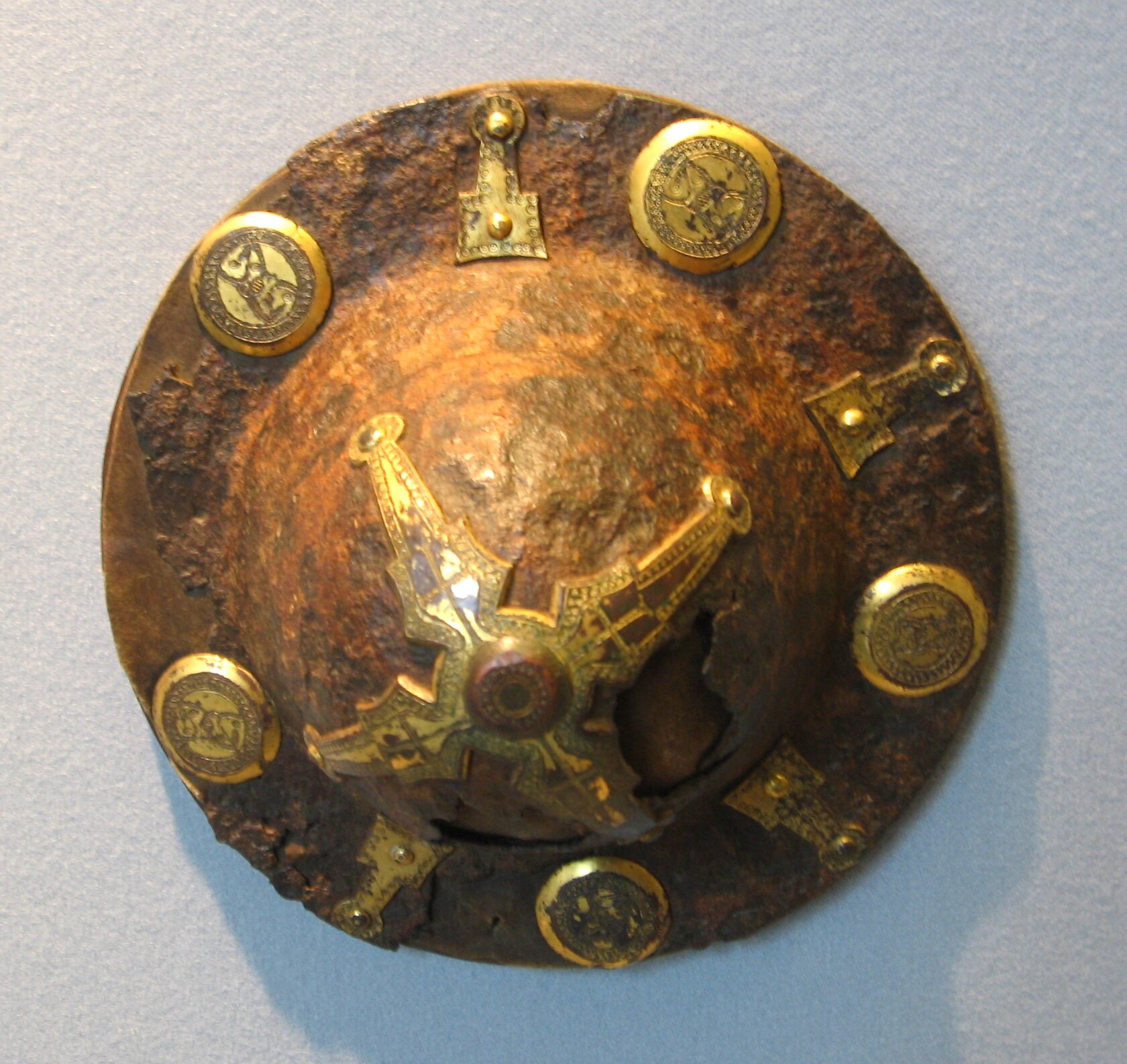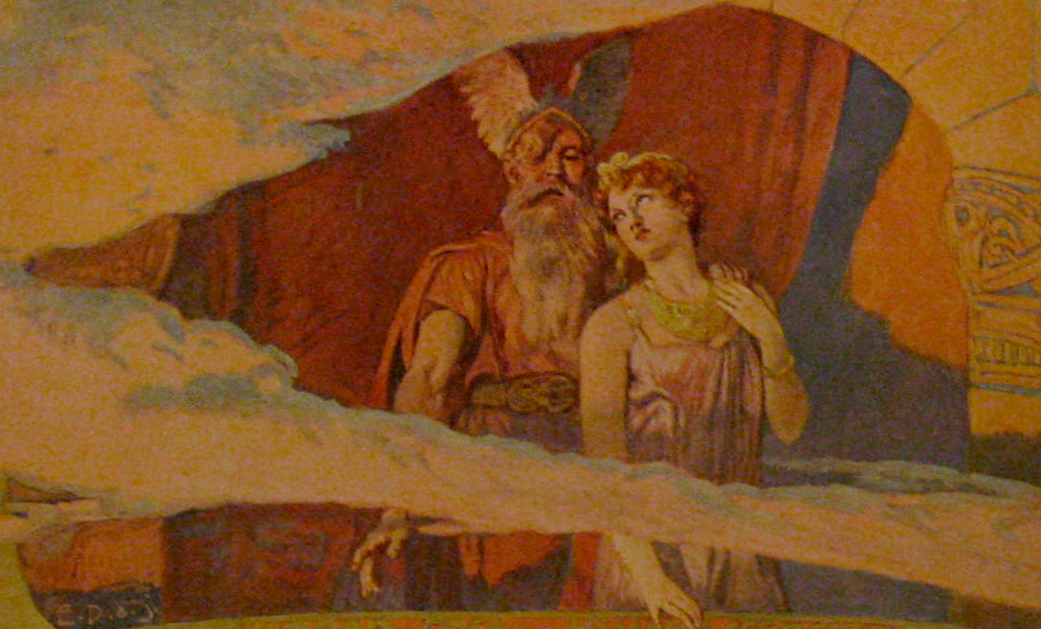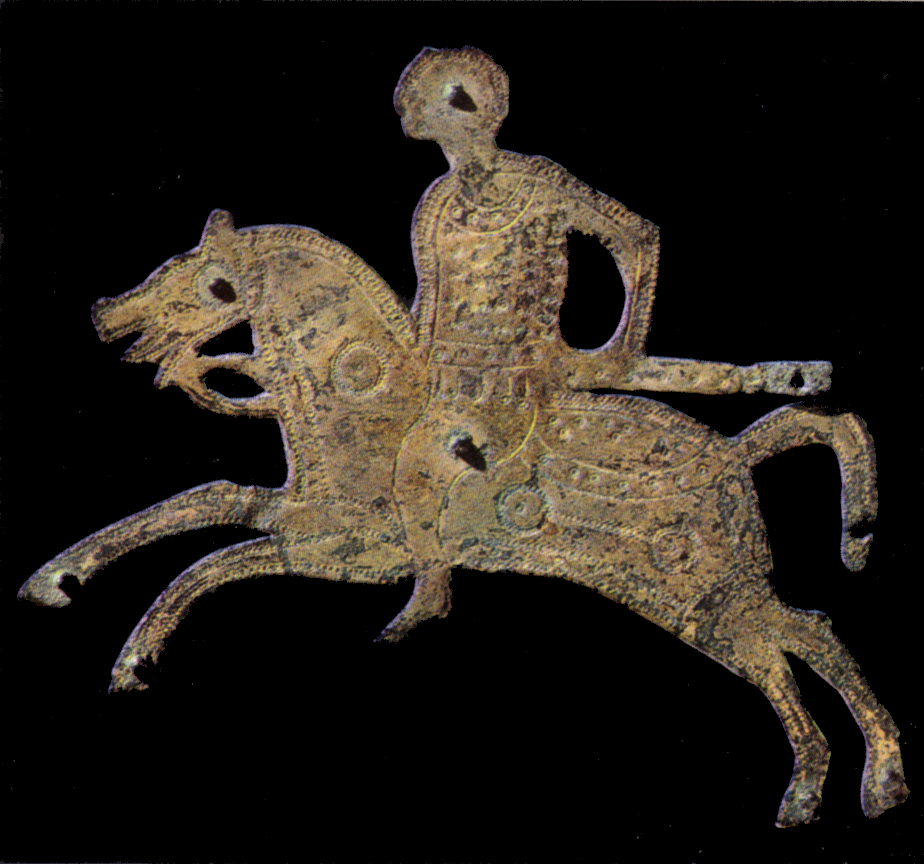This article deals with the history and mythology of Germanic tribe of Langobards (varying with the name Longobards/Lombards). The Langobards started their long journey from North Europe during the Migration Age, eventually settling in Northern Italy and forming a wealthy kingdom. The Langobards represent an example of people migrating along the Amber Road and staying true to their traditions even when in a new homeland, which is why we at Via Electri are happy to present to you this unveiling of the origins and religion of an ancient European tribe.
"Sitibonds of human blood": the furious horde of the Langobards
Fom Terra Insubre 97, 2021
by ANDREA ANSELMO
The archaeological evidence and the renewed analysis of the Lombard legislative corpus shed new light on the initiatory practices of these ancestors of the contemporary Italians, as well as studies of comparative Indo-European mythology.
How much importance did the Lombards attribute to their mythical ethnogenesis and how much did the legislative tradition count to federate the different tribes into a single people? How much did the consciousness of being a warrior and victorious people, able to emerge from the mists of north-eastern Europe up to the conquest of Italy, have an impact? What degree of continuity can be hypothesized between the previous Ostrogothic domination and that of the Lombards?
These questions can be answered starting from written and legislative sources. But not only.

In the last decades, also by the excavations carried out in the necropolis of Collegno (TO), Frascaro (AL) and Mombello Monferrato (AL), it has been possible to come into direct contact with the material legacy and the symbolic universe of the Longobards and Ostrogoths who settled in our country. In addition to these wonderful archaeological discoveries, there is also the re-evaluation of the Longobard runic engraving found in Belmonte (TO). Recently, the archives of the Museum of Antiquities of Turin have recovered a fusaiola of Pannonian origin found a few decades ago in Belmonte, in Eporedia: on it, some runic characters were engraved, an irrefutable proof of the diffusion of this alphabet among our Lombard ancestors.
Thanks to the exhibition "I Longobardi: un popolo che cambia la storia" ("The Longobards: a people who change history"), some themes linked to the customs and habits of this people have benefited from a certain amount of media exposure in our country. However, the theme of the pre-Christian Longobard heritage - fascinating though it may be - still needs to be explored in depth: it is fundamental to truly understand the traditional and conquering spirit of this Germanic people.
"The solitude of the Faustian soul cannot be reconciled with a dualism of cosmic powers. Already around the Germanic gods and heroes stretched inhospitable distances, enigmatic darkness; they now emerge from the music, at night, because daylight creates frontiers to the eye, and yet corporeal things. The night dematerializes, the day disanimate.
In the Edda we hear those deep night hours in which Faust meditates in his study. Wotan, Baldur, Frea have never had a Euclidean figure. As with the gods of Vedic India of them one cannot form an image, some comparison." (Oswald Spengler, The Decline of the West)
The Myth of the Origins and its renewal through sacrificial action
"More ferocious than the Germanic ferocity". So are presented for the first time on the stage of History the Lombards, described in these terms by Velleio Patercolo, in his History of Rome (II, 106). And their tenacity and warrior strength is emphasized by Tacitus in his De Germania, to compensate for their small population.
"The small number ennobles, on the contrary, the Lombards: although surrounded by numerous and valiant peoples, they find their security not in submission, but in the risks of battles."
Still in the sixth century A.D. Procopius of Caesarea, in De Bello Gotico, describes the ferocity of the Lombard mercenaries who intervened on the side of Byzantium against Totila. Procopius tells us, in fact, that the Byzantine Narses, while praising God in the aftermath of his success over Totila, immediately had to deal with an urgent matter: "First of all he wanted to get rid of the unconscionable behavior of the Lombards in his retinue, who, apart from other illegal acts, set fire to the buildings they came across and raped the women who took refuge in the Churches".
A truly exemplary behavior for a people - at least theoretically - recently arrived to Christianity!
The warrior daring and the thirst for adventure of the Longobards is still astonishing: the recent discovery of the Italian burial of one of them whose forearm, amputated after a wound, was replaced with a blade-shaped prosthesis - a sort of captain hook of other times - gives us the measure of the implacable bellicosity of these ancestors of ours. Or the story told by Procopio of the leader Ildige, Lombard exile at the Gepidi, who with some of his followers joined the Slavonians and tried to force the Byzantine lines in an attempt to reach Totila and lend him help in the war against the overwhelming army of Greek-Byzantine invasion.

History presents us therefore a series of tribes orwho are united into a people in arms, that lived dangerously the centuries of Wanderung inside the Barbaricum, before arriving in the Italian peninsula. Bearers of a worldview defined by some authors as almost anachronistic, the Lombards represent the breakthrough of a confederation from the "outdated" culture, since, despite the formal conversion to Arian Christianity by part of its political elite, probably linked to the entourage of the sovereign, still carried with them strong primordial Indo-European legacies, such as horse sacrifices, the cult of the dog as a totemic animal and the persistence of the symbolism of swastika; all elements handed down from the funeral of their necropolis.
We can frame some of the fundamental Indo-European traits by quoting E. Benveniste, who described them thus in one of his lectures in 1938:
"They are small groups of daredevils, strongly organized, who build their order on the ruins of pre-existing structures [...]. They will all retain [...] the distinctive traits of their community of origin: aristocratic style, a society of priests, warriors and farmers; royal sacrifices (the most significant of which was that of the horse, the Vedic asvamedha); conquering instinct and love of open spaces."
It is important to emphasize at once the importance of the Vedic sacrifice of the asvamedha, which will recur frequently as a term of comparison in these pages:
"The most important and best-known Vedic ritual is the "horse sacrifice," the asvamedha. It could be performed only by a victorious king who acquired in this way the dignity of "Universal Sovereign". But the effects of the sacrifice radiated over the whole kingdom; in fact, it was believed that the asvamedha purified impurities and ensured fertility and prosperity to the whole country [...]. The sacrifice of the horse is certainly of Indo-European origin. There are traces of it among the Germans, the Iranians, the Greeks, the Latins, [...]. It is likely that the asvemedha was initially a rite celebrated on the New Year. Its structure involves cosmogonic elements: the sacrifice symbolizes the act of creation. The horse is in some ways a substitute for the king. The purusamedha, sacrifice of man, in fact closely follows the asvamedha. The question has been raised as to whether such a sacrifice was ever actually practiced. It has been shown that the mythical-ritual scenario of the purusamedha finds a surprising parallel in the Germanic tradition: wounded by a spear and hung on the World Tree for nine nights, Wotan (Odin) sacrifices "himself to himself" in order to obtain wisdom and to master magic (Havamal, 138). According to Adam of Bremen, writing in the eleventh century, this sacrifice was ritualized in Uppsala every nine years with the hanging of nine men and other animal victims. This Indo-European parallel makes plausible the hypothesis that purusamedha was practiced literally." (Mircea Eliade, History of Religious Beliefs, and Ideas, Sansoni, 1990)
In other words, the mythical act of organizing the world at its origin (through the dismemberment of the macranthrope Purusha or its Norse counterpart Ymir) are re-invoked through the sacrificial action that explicitly refers to this cosmogonic myth. Such ritual killing involves a human or animal correspondent of Purusha or Ymir.
"M.H. Guentert, Der Arische Weltkoenig und Heliand, Halle 1923, p 326 et seq. has given very well-founded comparative reasons for regarding as properly Germanic the account of an origin of the world from the dismemberment of the primitive giant Ymir (whose name seems to be related to that of the first man of Vedic and Avestic mythologies, Yama)." (G. Dumezil Mythes et Dieux des Germains, 1939).
It is not by chance that S. Gasparri, introducing the Lombard juridical corpus expresses himself in this way:
"Cosmogony and ethnogenesis [...] tend therefore to overlap. The same happens in another Tacitan testimony, related to a Swabian tribe, the Semnoni, who in a sacred wood renewed, with periodical human sacrifices, the horrendia primordia, the bloody process of creation of the world occurred through the original sacrifice of a mythical being. The cosmogonic ritual of the Semnoni corresponded in fact to a myth of the origin of humanity (initia gentis) which was perhaps like that of Tuisto; and there is also a strong parallelism with the later Scandinavian myths attested by the two Edda, which recall the birth of the world from the killing of the giant Ymir." (in "Le Leggi dei Longobardi" edited by C. Azzara and S. Gasparri, Viella)
The persistence of such Indo-European traditions among the Lombards, among which the sacrifice of the horse, is particularly interesting because it is refractory to the Christian and Byzantine machination of the world. Ending this introduction on the properly sacrificial aspect of the Indo-European and Germanic world, we rely on the words, synthetic and yet so enlightening, of G. Chiesa Isnardi:
"[...] The symbolism of this rite in the Nordic world also shows how the lofty sacrifice is that in which the victim is the very being immolated to itself. If on one hand this conception seems to be a heritage of ancient cults, on the other hand it assumes the meaning of an initiation rite from which fruits of superior knowledge spring" (I Miti Nordici, Longanesi 1991).
From Scandinavia to Central Europe: under the sign of Frea and Wotan.
The best-known historian among the Lombards is Paulus Warnefried, to whom we owe, among other things, the name of the musical notes, deduced from his hymn dedicated to John the Baptist and later taken up by Guido D'Arezzo.
In his fundamental Historia Langobardorum, Paul Warnefried, italianized as Paul Deacon, told us how the Winniler, or "the furious dogs" - or according to the vocabulary compiled by Francovich-Onesti "The victorious" - original name of the tribe, left Scandinavia (Scania) in the wake of Gambara, prophetess and priestess of Frea, and her sons Ibor and Aio.
"About the war of the Vandals and Vinnili a ridiculous fable is told. For they report that the Vandals, having approached Godan, would have asked him to win over his enemies, and that he would have replied that he would have delivered the victory, to those who first showed themselves at sunrise. Then Gambara came forward to Frea, Godan's wife, and asked for the victory of the Vinnili. Frea offered a suggestion, that the women of the Vinnili untied their hair and put it close to their faces as if it were a beard, and that at the end of the day they deploy like men, to be escorted by Godan, in the place where he used to observe the rising of the sun through a window. And in this way, it was done. Godan after seeing them said, "what are those long beards?" Then Frea incited him to give them that name and gave them the victory. Thus, Godan offered victory to the Vinnili. It is certain that the Lombards, who were formerly surnamed Vinnili, from the length of their unkempt beards were called in this way. In their language in fact (the word) "long" means long and (the word) "bar" (means) beard. Godan himself is the one who is nicknamed Mercury by the Romans and by all the people of the Germans he is honored as a god."


